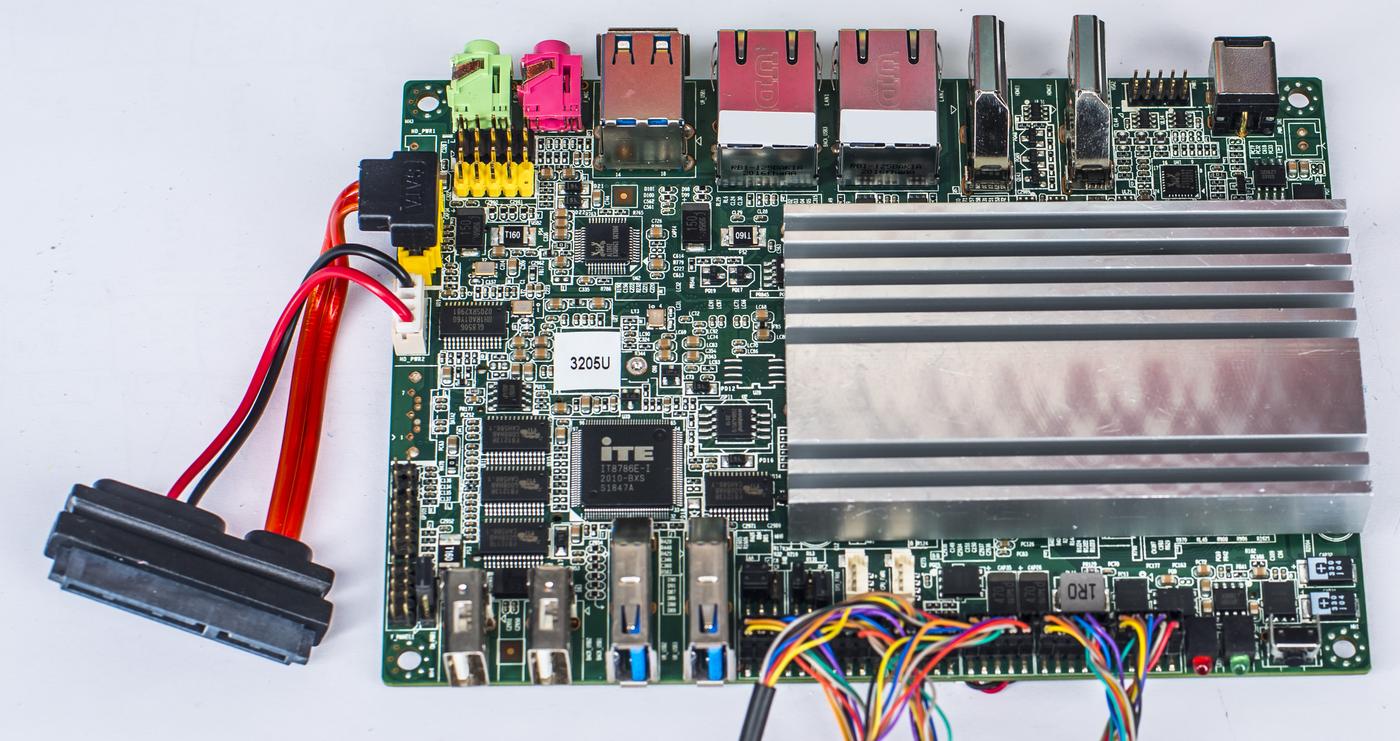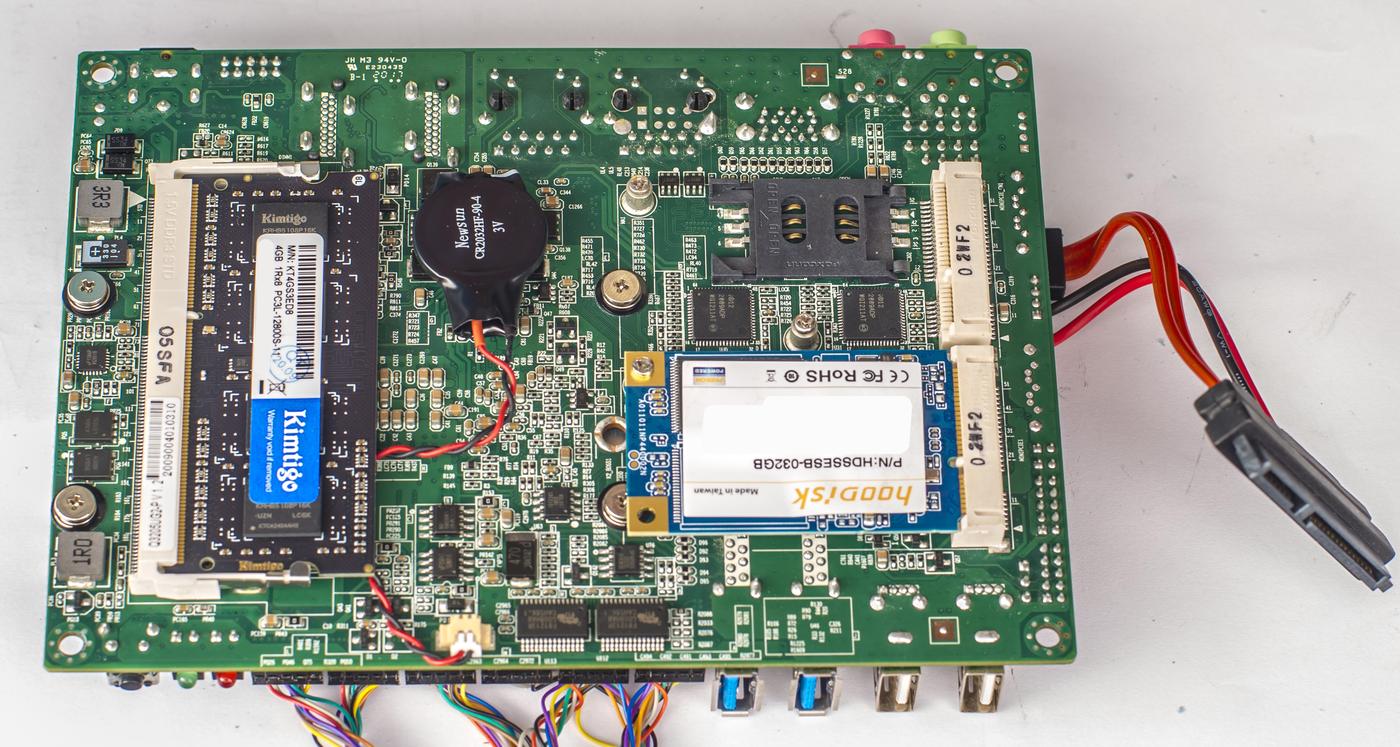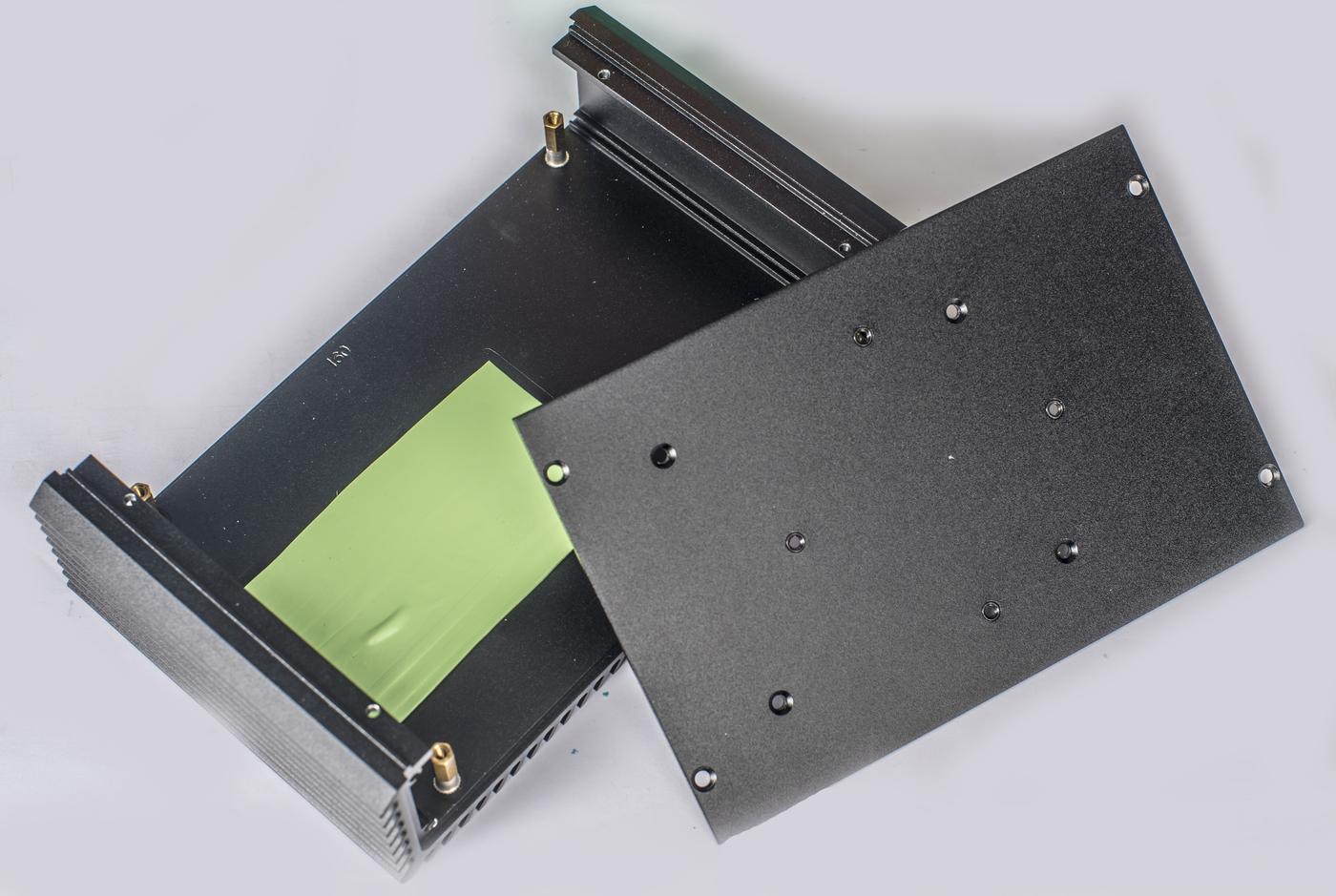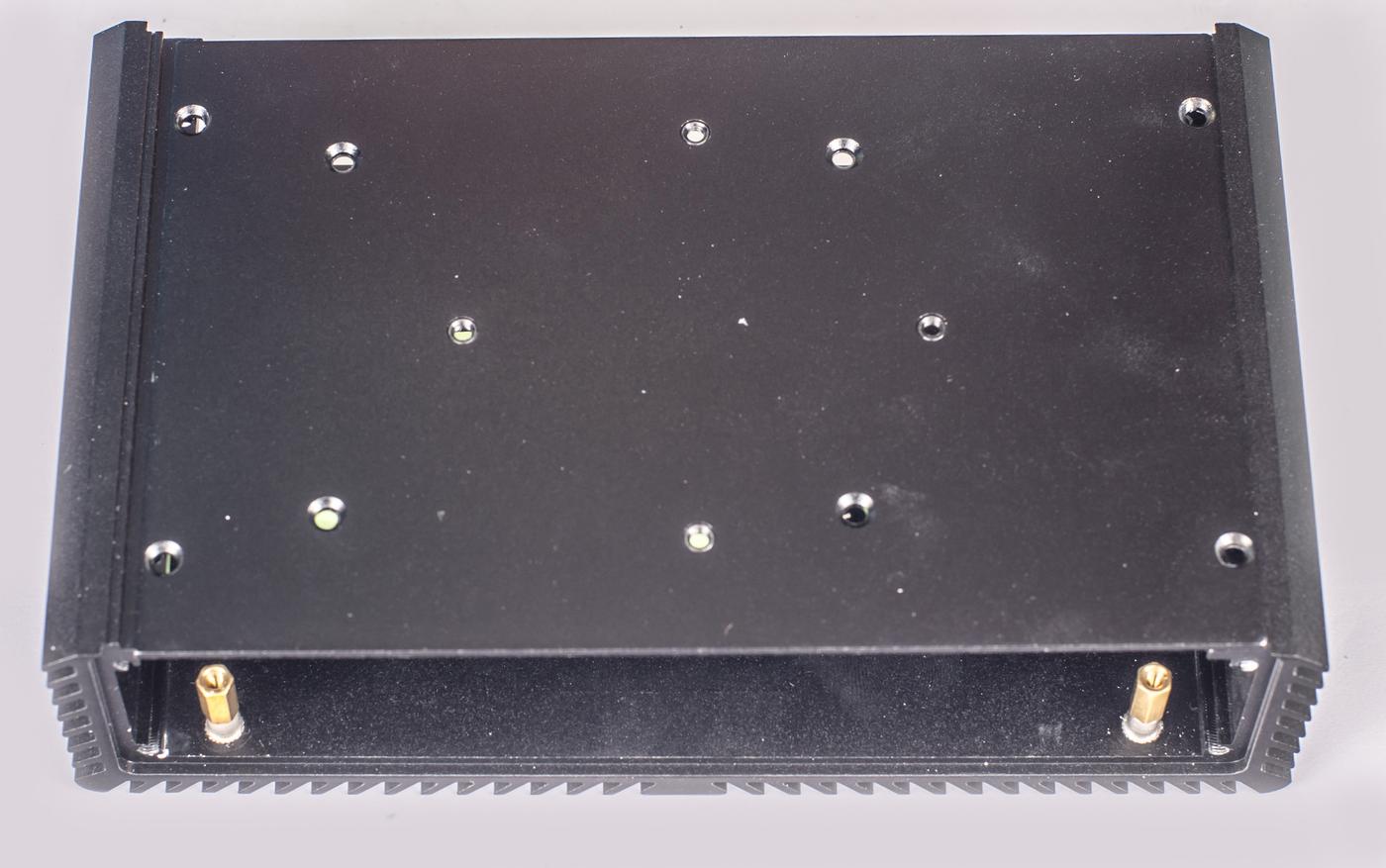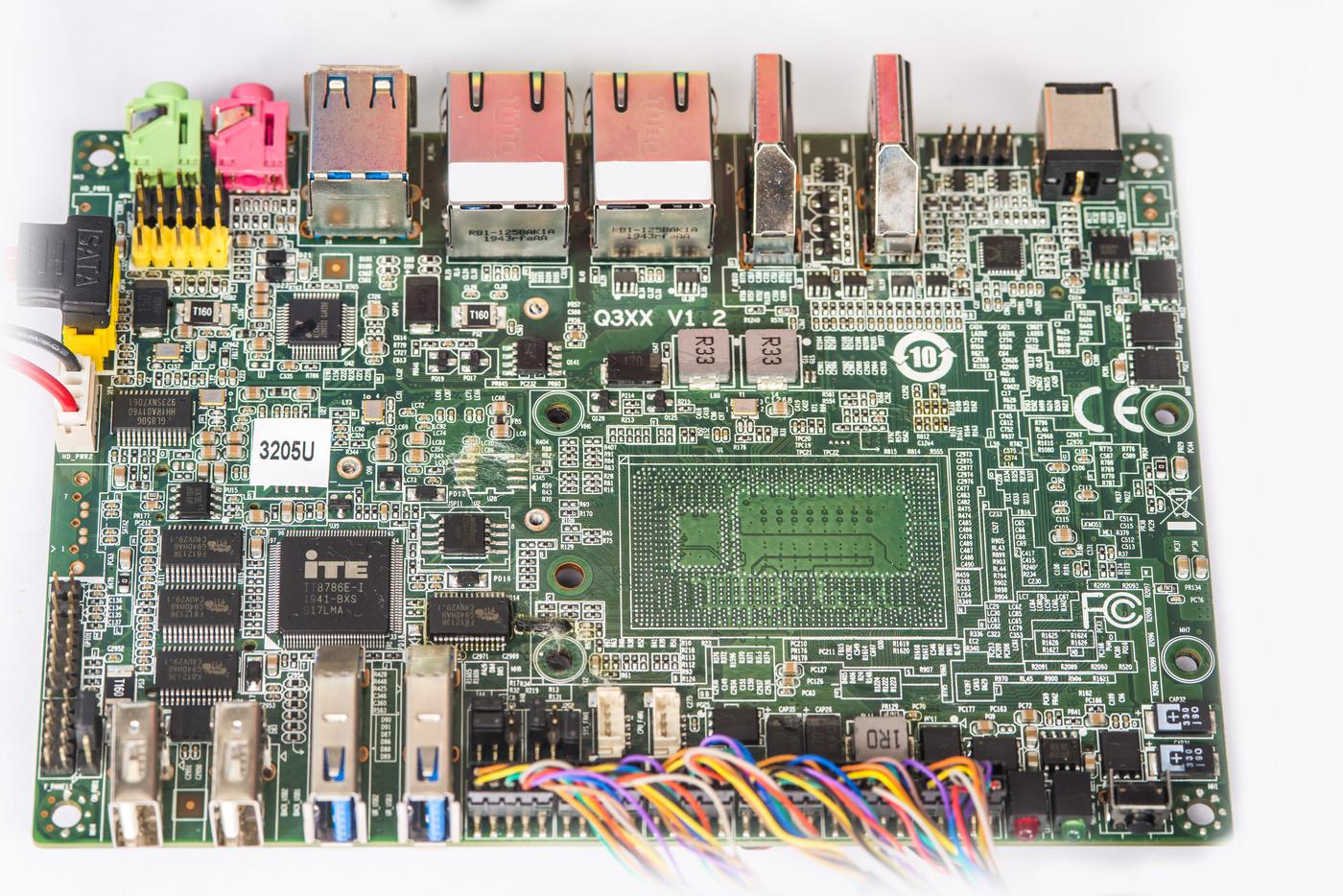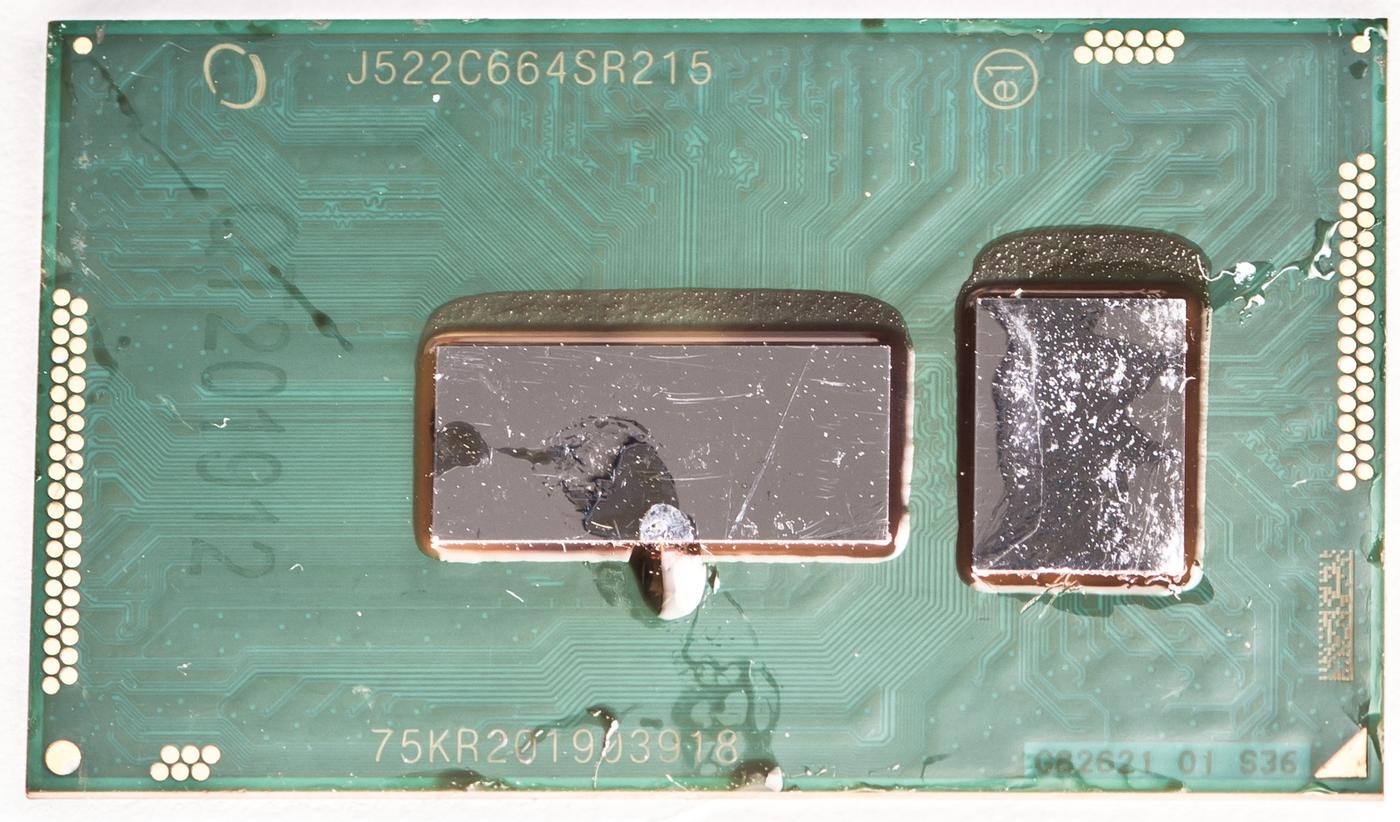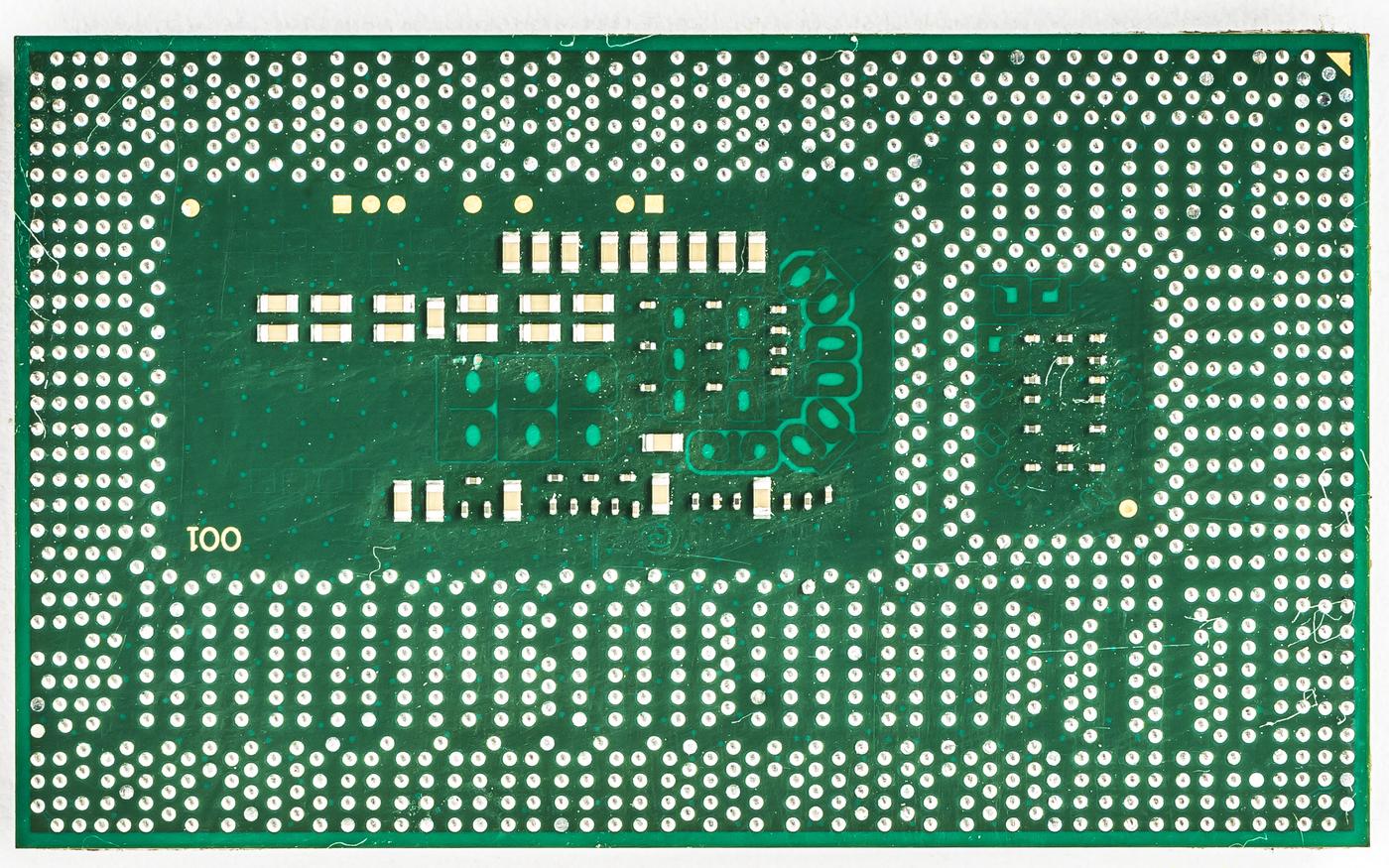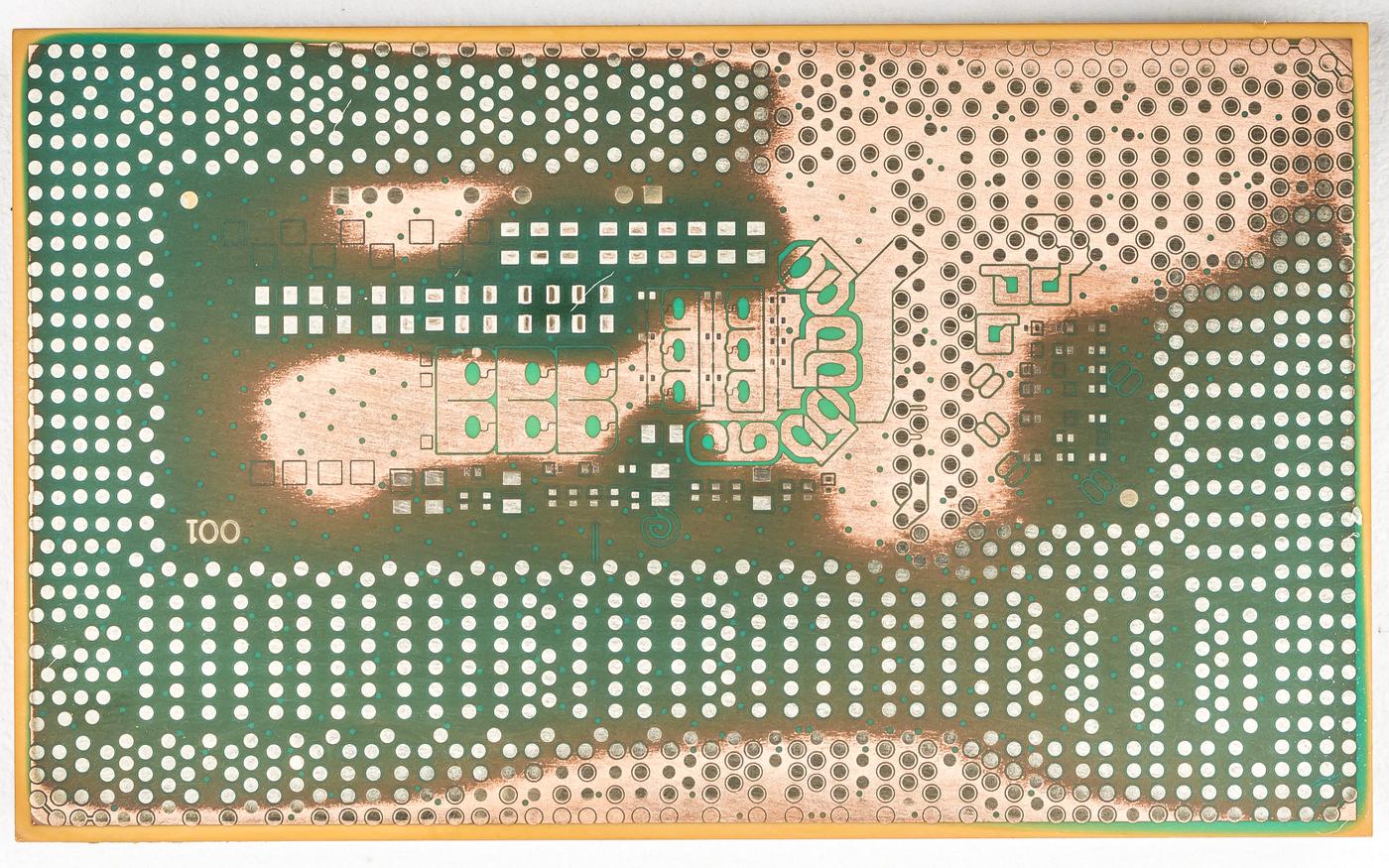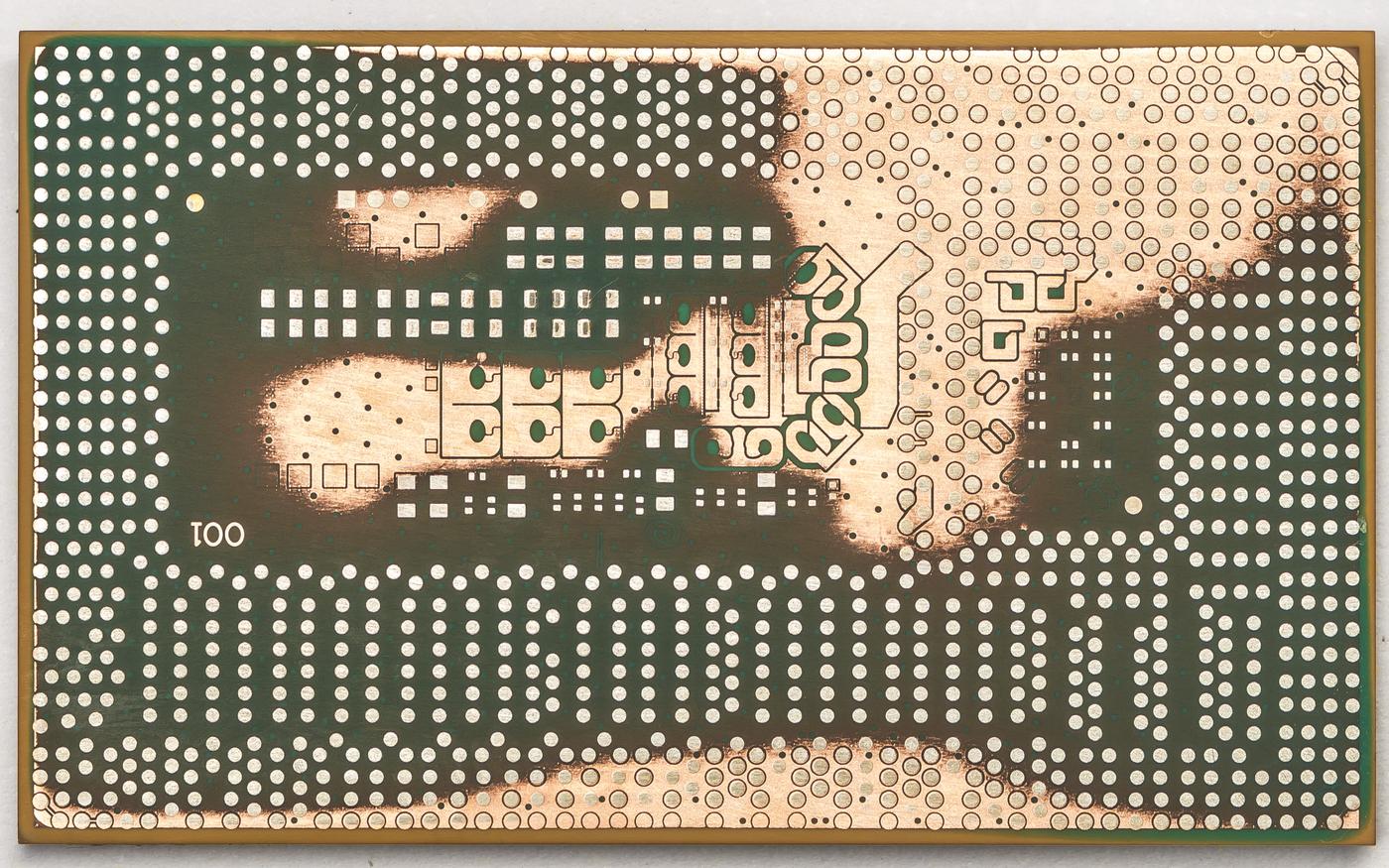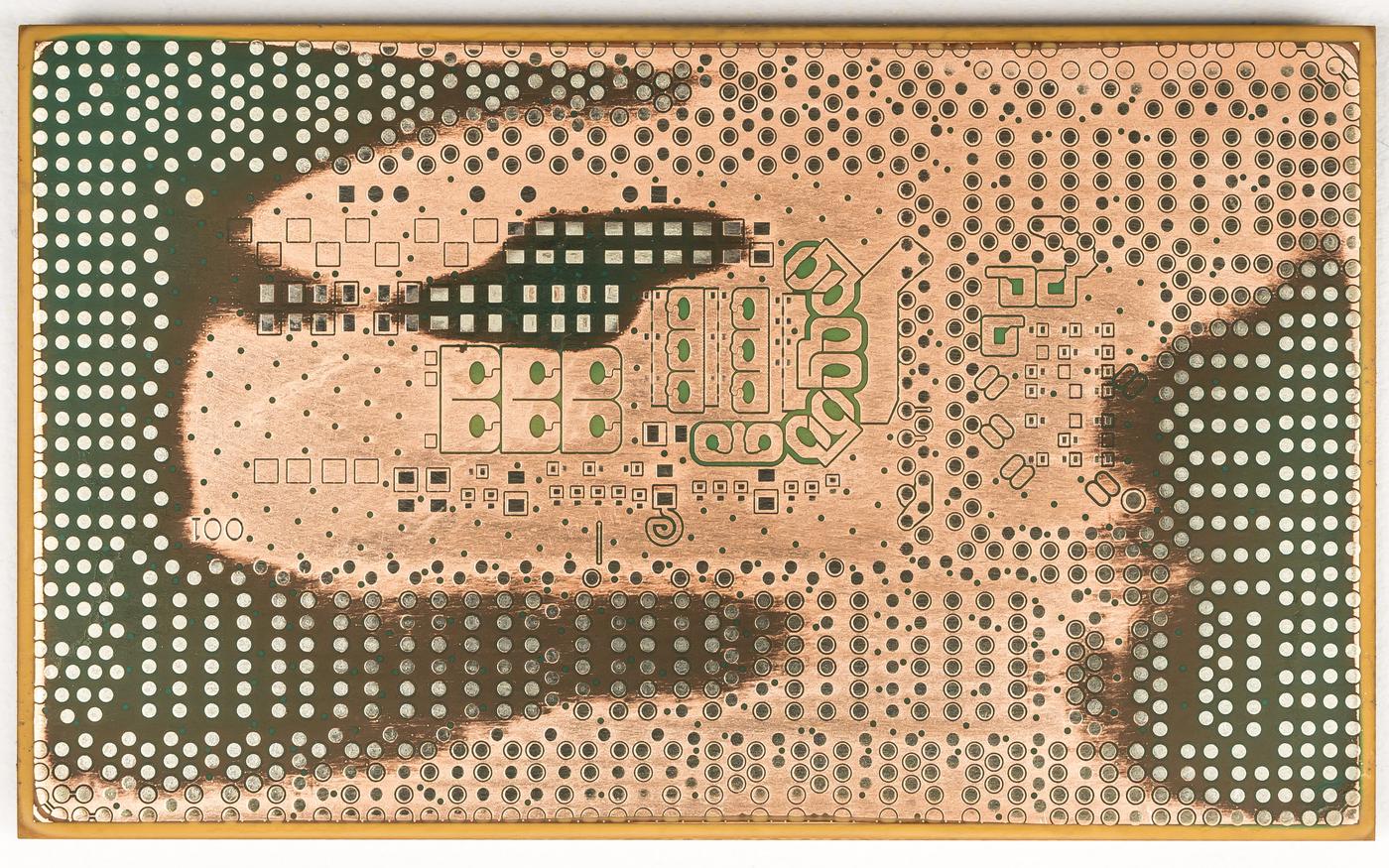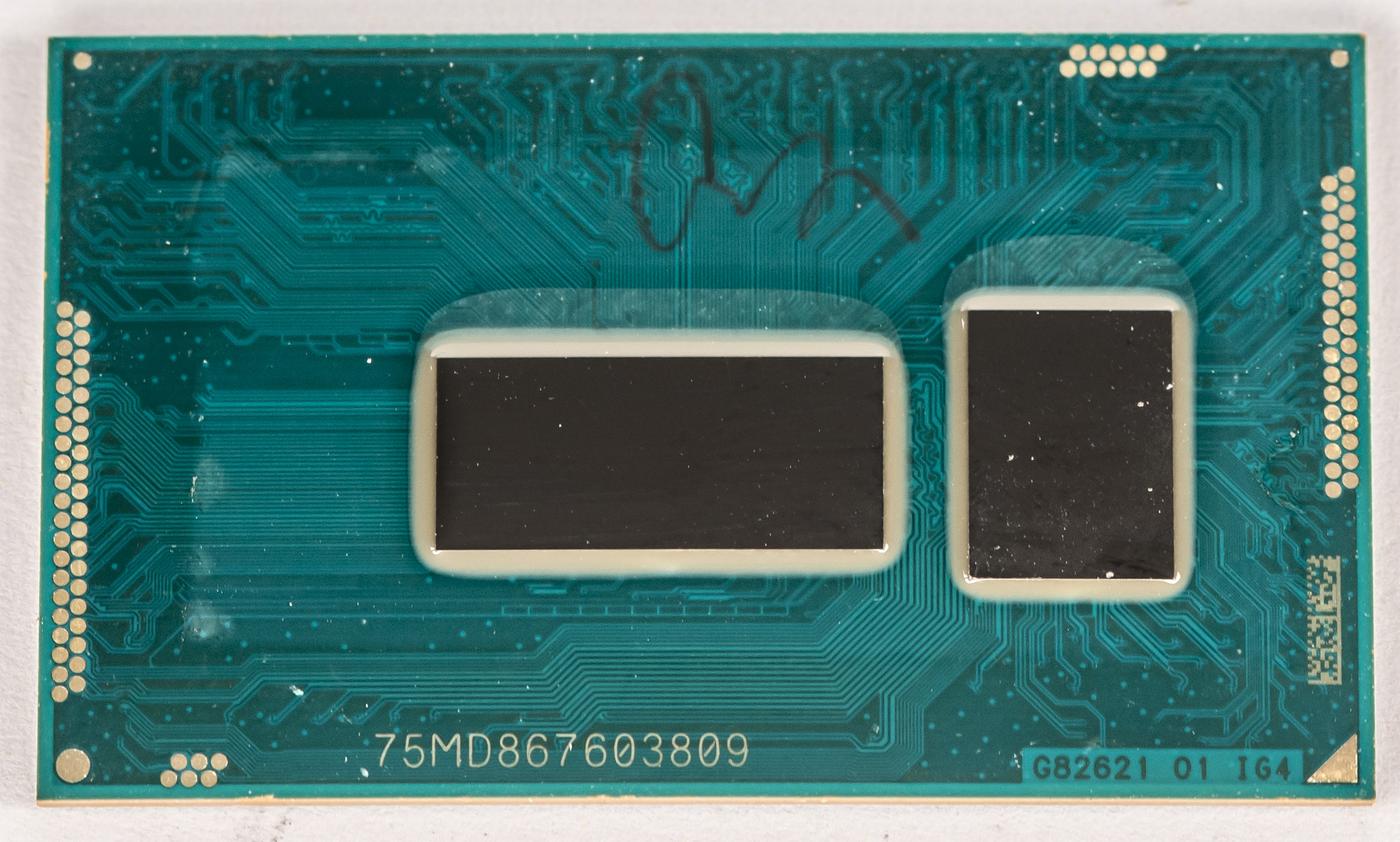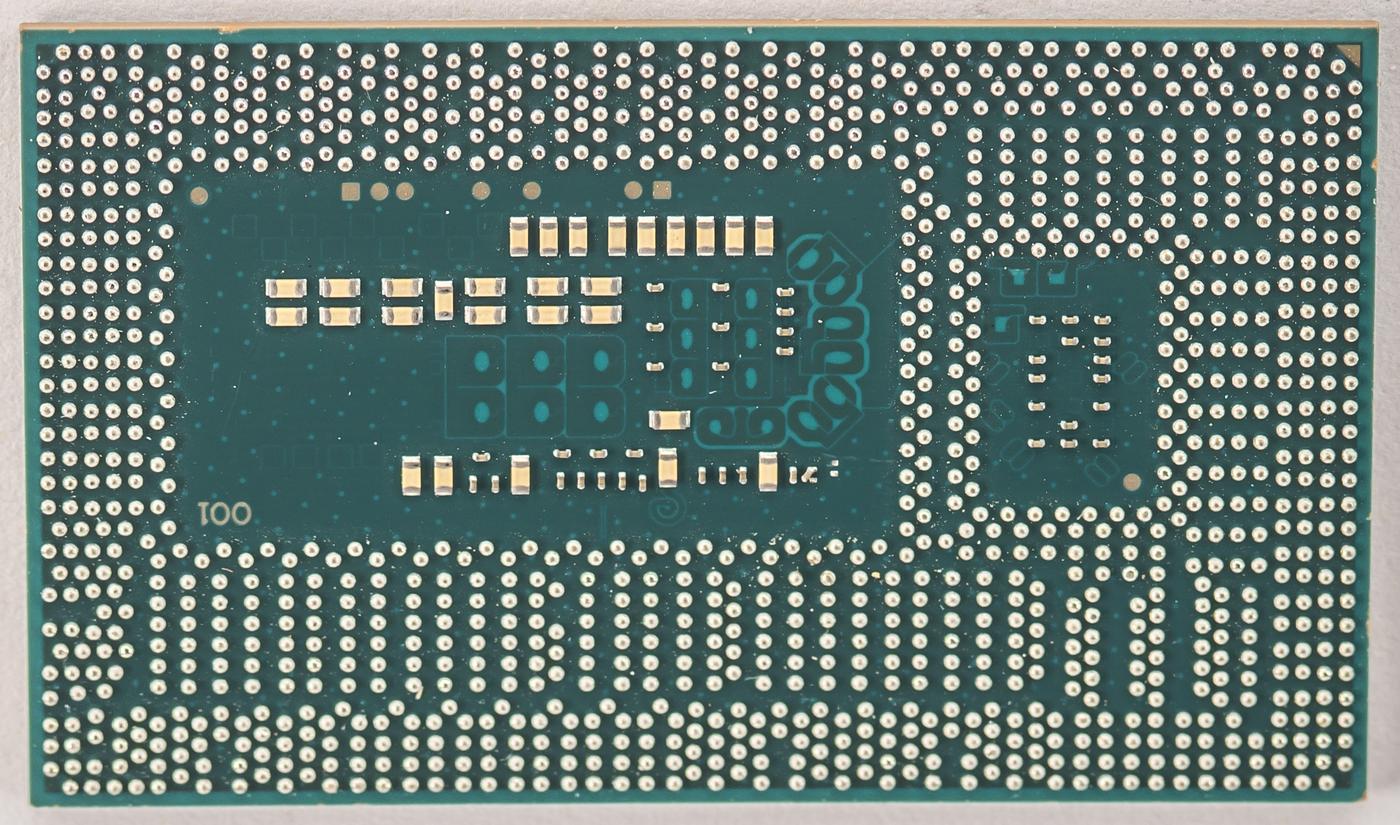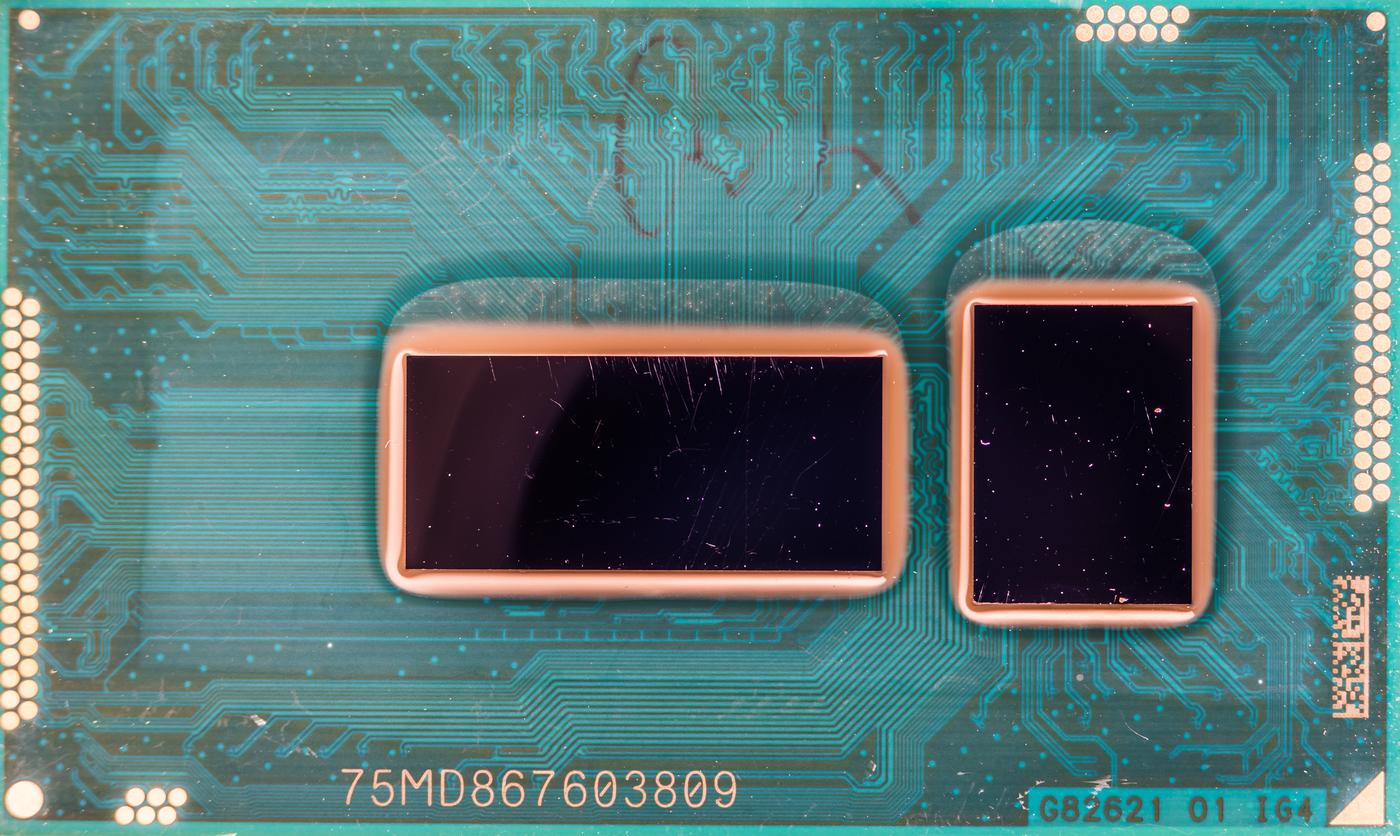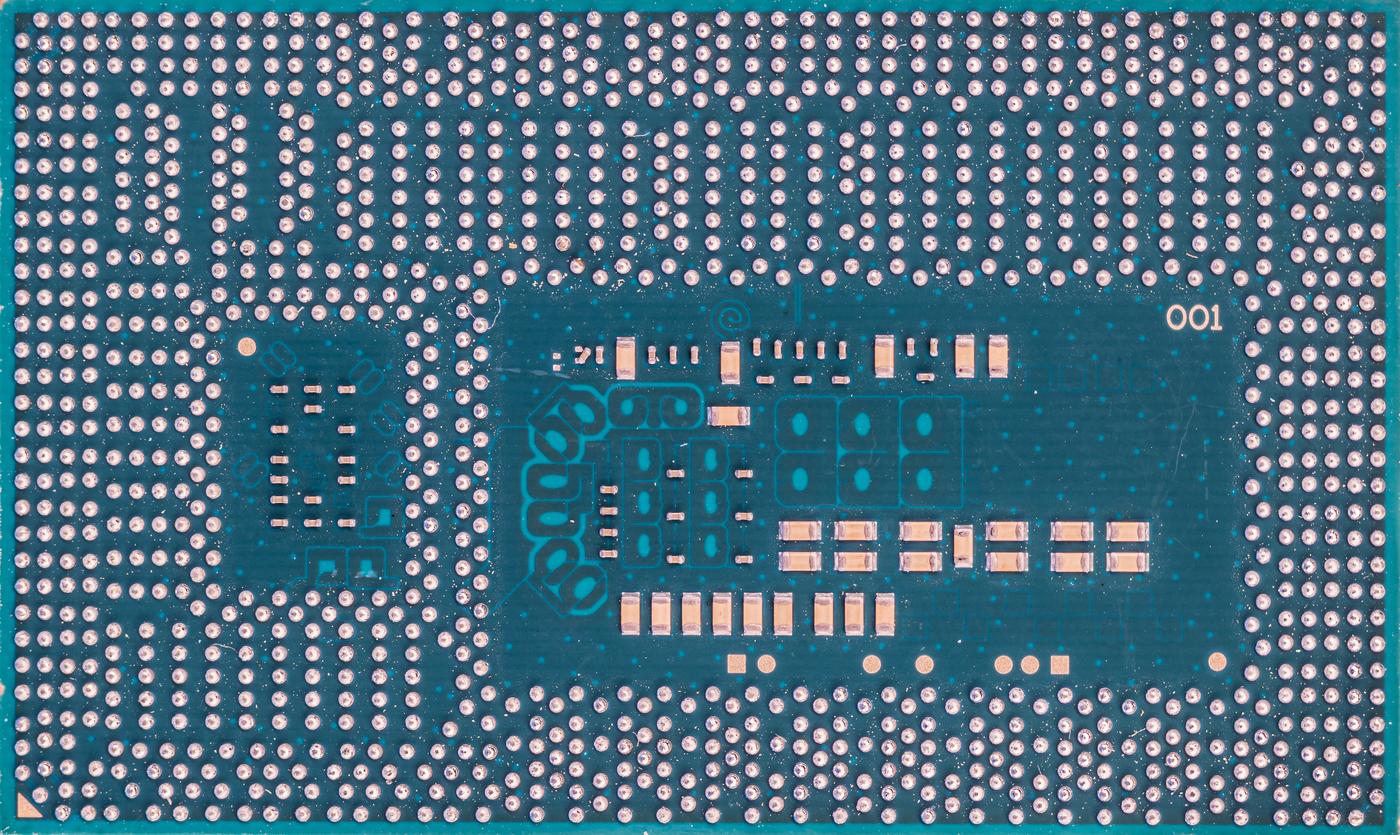Intel FIVR, what is it?
FIVR is integrated voltage regulator to provide multiple voltage rails on CPU/PCH chip package in order to reduce BOM costs for the platform, and to enable additional voltage level features the processor can take advantage of. There are many FIVRs integrated on the PCH, VNN/V1P05 which is sourced from VCCIN_Aux. VCCIN_Aux also sourced the VCCSA rail in a CPU. In addition to VCCSA FIVR, compute die integrates 4 additional FIVRs to source VCCCORE, VCCSA, VCCL2, VCCGT and VCCRING, which derives the respective voltages from VCCIN VR on platform. Each FIVR is able to control a specific voltage rail independtly.
Presentation by Intel’s Edward (Ted) Burton from APEC 2015 conference can reveal some technical design details and concept of the FIVR components and integration for Haswell generation (4th gen Core).
Test specimen for a physical look
I got a motherboard with a broken Celeron 3205U Broadwell MCP. This motherboard has 3205U soldered on since it’s sold only in FCBGA1168 packaging combined together with mobile Wildcat Point-LP PCH chipset. PCH chipset was destroyed perhaps due to overvoltage on some I/O port.
I’ve de-soldered chip for further detailed analysis.This SR215 package combines two dies, larger processor code with two Broadwell-U cores, decently powered 5th gen GT1 iGPU, PCIe controller, uncore domain and dual-channel DDR3L memory controller for up to 16 GB. In this Q3XXV motherboard built around November 2017 processor runs memory at 1600MHz.
Smaller die next to CPU is a PCH chip that provides all the low-speed connectivity like USB, serial interfaces, SMBus controllers, SPI for BIOS and LPC for I/O. Organic substrate reveals micro-routing for all the differential and single-ended signals from both dies.
On the back of the processor+chipset MCP package one can find typical BGA pads and some bottom-side decoupling. Larger capacitors are in thin 0402 SMT form-factor while tiny ones are 01005 casing. Already small 0402 looks so huge compared to the tiny ones here. Also for reference biggest capacitance available on Digikey for this size using X7R type is just 2.2 nF compared to typical 100-200 nF in 0402.
Now time to get medieval and sandpaper some soldermask away with P800 grit abrasive, revealing pretty copper structures on the multi-layer substrate carrier.
Funky looking donuts and shapes are actually air inductors for very high frequency on-chip voltage regulator. Intel implemented it and started actively using FIVR DC-DC starting from Haswell processors for all mobile, desktop and server product lines. Overall concept is as following:
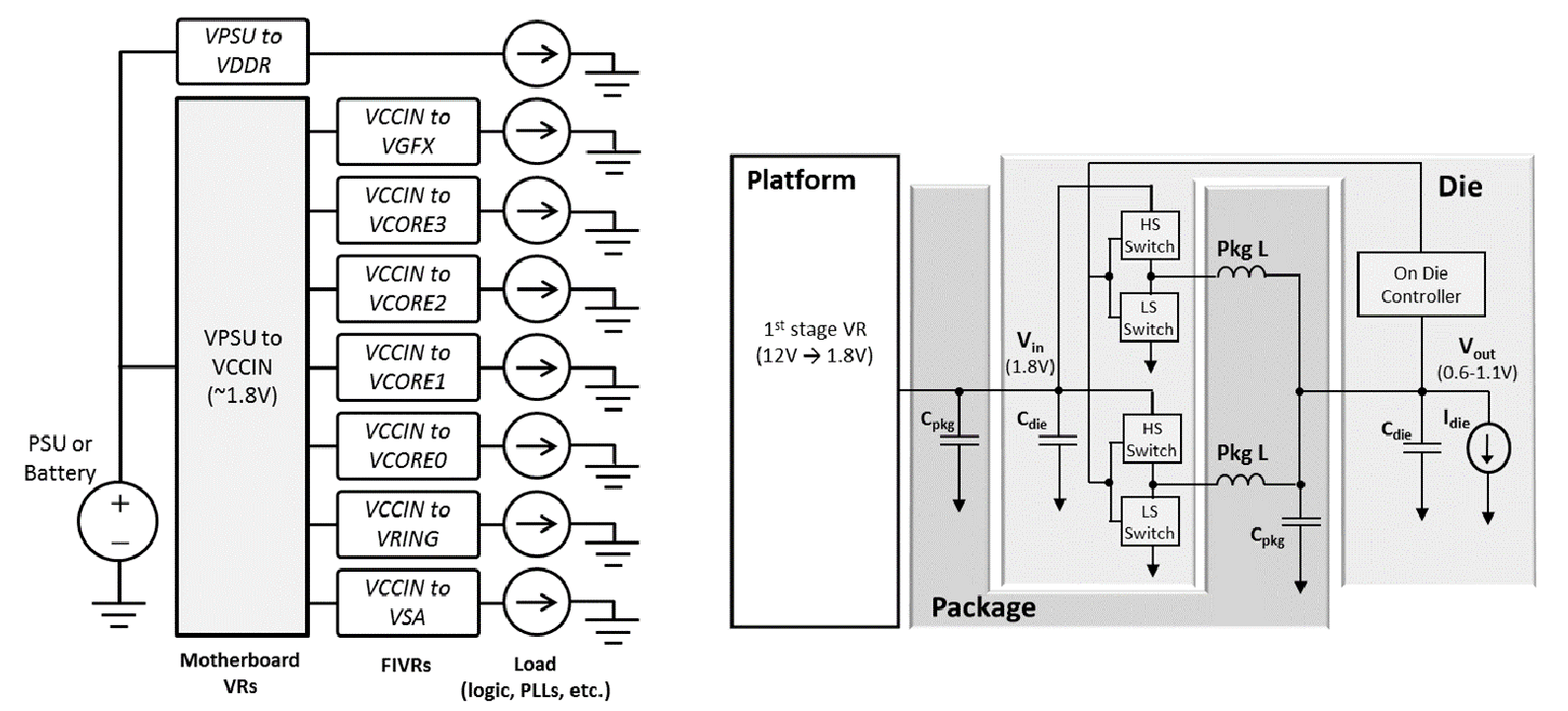
Idea of FIVR is to increase speed and voltage regulation management capability by moving last stage voltage regulation from motherboard to actual processor package.
Motherboard still need to provide somewhat regulated low-ish voltage to FIVR input, usually at level 1.8-1.9 VDC since +12V is not compatible with thin transistors and would be too inefficient. Also processor cores, GPU and onboard hardware often may require tens and hundreds amps at rails with very low voltages below 1V and very limited space on chip and substrate such voltage regulator have to operate at high frequency.
To keep all this efficient FIVR buck converters also incorporate many phases (tens, sometimes hundreds in later processors) working in parallel with possibility for fast gating to turn off many of them very quickly when loads are very light.
Some of details of FIVR implementation from 4th gen processors are explained in this paper. We can even see 3D presentation of the air core inductors, quite similar to ones on this Celeron 3205U chip.
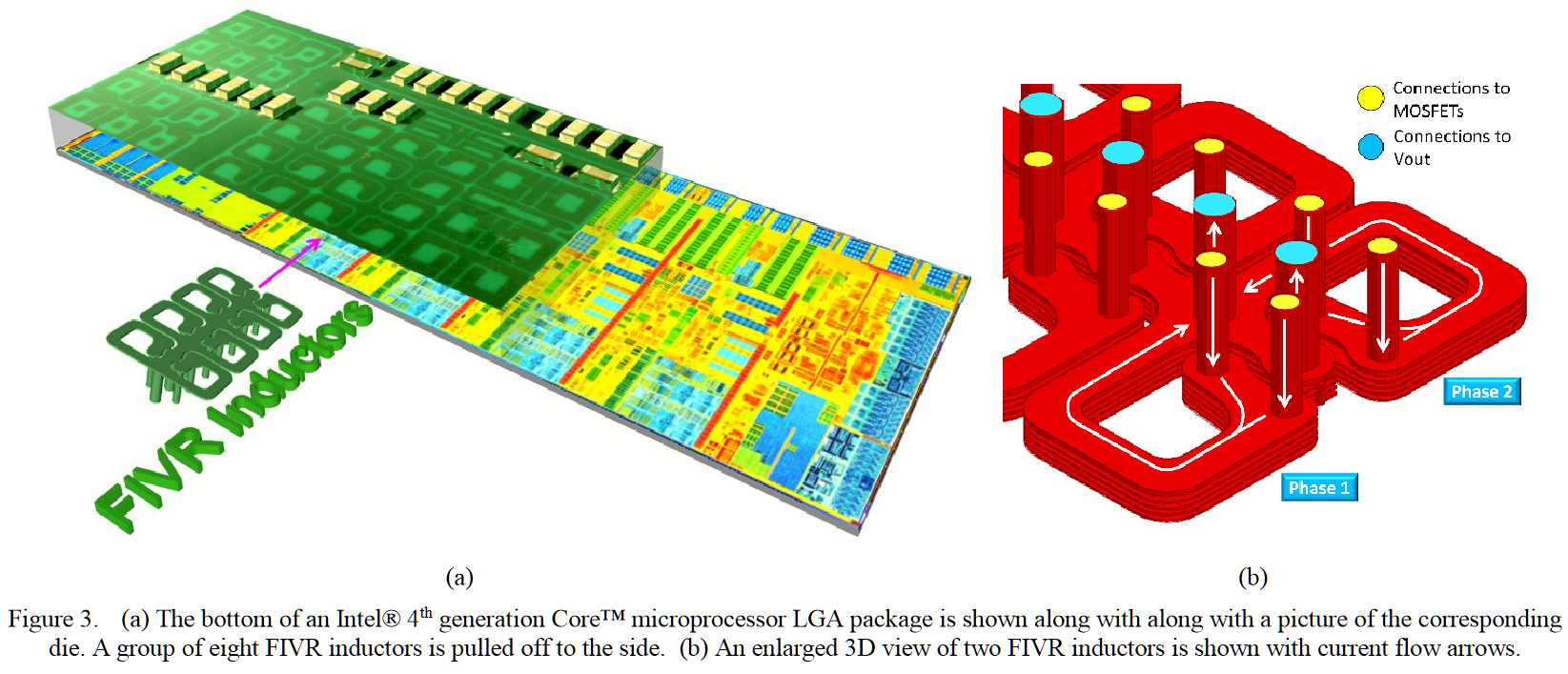
According to paper linked above regulator on 4th generation processors built on 22nm node, runs at 140 MHz switching frequency and able to achieve maximum current density 31 A per square mm of die space with 90% efficiency of down-converting 1.7 VDC motherboard rail down to 1.05 VDC core voltage. Phase count for such solution is from 49 to 360 phases. Fast switching frequency allows for rapid response on transients and allows to turn on or off various power rails in single microseconds.
Server variant 5th generation Xeon Broadwell-EP processors used even finer and smaller FIVR air inductors, optimized for different domains and loads. Those inductors occupy space under 1 square millimeter and have just few nanohenry inductance. 3D presentation of such design is referenced below from Bharath, K., & Venkataraman, S. (2016). Power Delivery Design and Analysis of 14nm Multicore Server CPUs with Integrated Voltage Regulators. 2016 IEEE 66th Electronic Components and Technology Conference (ECTC). doi:10.1109/ectc.2016.322 paper.
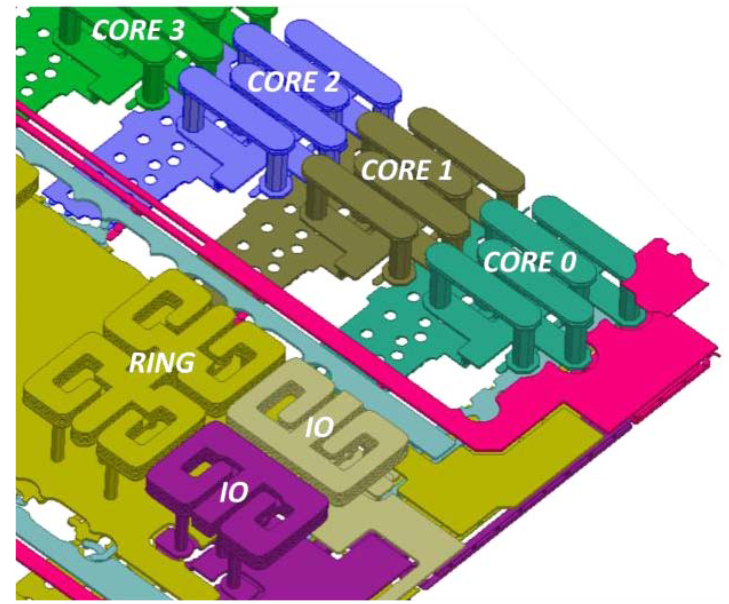
These FIVR are pretty good and efficient for everyday normal operation but were great pain for extreme overclocking, especially with cold temperatures such as liquid nitrogen cooling. FIVR is a complicated solution that rely on properties of materials which don’t change as much at temperature range from 0 °C to +100 °C. But when temperatures drop very cold below -100 °C or -120 °C these air inductors and regulators stop working properly causing CPU power loss and resulting in mandatory warming up to higher temperatures and power cycle to regain processor operation. Hence all Intel processors that utilize FIVR are limited in low temperature range at around -100 °C…-130 °C unlike non-FIVR processors that could operate and run benchmarks even below -200 °C.
Next step perhaps is to attempt repair of this motherboard with little upgrade idea to Core i5-5500U, which is based on same Broadwell-U silicon but has more cache and features. Visually i5-5500U looks exactly the same as Celeron and implements the very same FIVR regulator.
Back side:
And higher resolution, better images reveal broken capacitor at the back.
Stay tuned and let us know your feedback on this post! Discussion about this and related stuff is also welcome in comment section or at our own IRC chat server: xdevs.com (port six-zero-ten-zero, channel: #xDevs.com) or via e-mail.
Modified: Nov. 5, 2023, 4:45 a.m.

